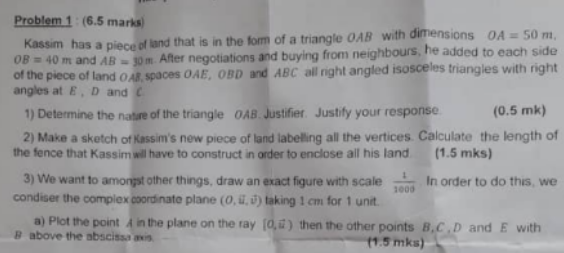
Question and Answers Forum
AllQuestion and Answers: Page 453









Pg 448 Pg 449 Pg 450 Pg 451 Pg 452 Pg 453 Pg 454 Pg 455 Pg 456 Pg 457
|
Question and Answers Forum |
AllQuestion and Answers: Page 453 |
| (((3 2 )),((4 5)) ) [A] = determinant (((3 2)),((4 5))) |
| Prove that I_n =(1/2^(n+1) )∫_π ^(4nπ) xcos (x/2)dx=((2−π)/2^(np) ) |

|

|
| Calculate: lim_(n→∞) Σ_(k=1) ^n (k^2 /n^3 )∙(k)^(1/k) =? |

|

|

|
| show that_β_(1 =( nΣxy−ΣxΣy)/(nΣx^2 −(Σx)^2 )=Σxy/Σ(xy)^(2 ) where x=(x−x^− ) and y=(y−y^− ) ) |

|

|
| lim_(x→3) ((e^x −e^3 )/(x−3))=? wiht out H,pital ruls |
| (x−1)(x+4)(x−2)^2 =10x^2 x=??? |
| find the root of f(x)=x^3 −5^x +3 using newton raphson iteration method |
| Solve the equation : 2+x^2 (x^4 +1)=(((√2)x^3 (x^4 −1))/( (√(x^4 +1)))) |
| y^(′′) − y^′ − 6y = xe^x sinx |
| prove: (((a^2 +b^2 )sinαcosα−ab)/((a^2 +b^2 )cos^2 α−b^2 ))=((asinα−bcosα)/(acosα+bsinα)) |
| Show that ∣1−i∣^x =2^x has no nonzero integral solution |
| Given f(x) = ax^5 + bx^4 + cx^3 + dx^2 + ex + f . f(1) = 1 , f(2) = (1/4) , f(3) = (1/9) , f(4) = (1/(16)) , f(5) = (1/(25)) , and f(6) = (1/(36)) . Value of f(8) = ? |
| Find the value of Q if ∫_0 ^Q (√(cosec θ−1)) dθ=ln (((3+2(√2))/2)) |
| _ Two small charged spheresn Two small charged spheresn cotain charges + q1 and + q2r espectively. A charge da ism reoved from sphere carryingh carge q1 and is transferredtoh te other. Find charge on eachs phere for maximum electrico frce between1 them.Ans.(12(q +q2) Twor paticles each having a mass of5 g and charge 107 C stay inlimiting equilibrium on ar hoizontal table with ai separaton of 10 cm betweene thm. The coefficient ofn frictio between each particlen ad the table is the same. Findthe value of thisn cocfficiet. Ans. u 018 cotain charges + q1 and + q2r espectively. A charge da ism reoved from sphere carryingh carge q1 and is transferredtoh te other. Find charge on eachs phere for maximum electrico frce between1 them.Ans.(12(q +q2) Twor paticles each having a mass of5 g and charge 107 C stay inlimiting equilibrium on ar hoizontal table with ai separaton of 10 cm betweene thm. The coefficient ofn frictio between each particlen ad the table is the same. Findthe value of thisn cocfficiet. Ans. u 018z |
| give: z=cos(((2π)/(2015)))+isin(((2π)/(2015))) find S=1+z+z^2 +z^3 +...+z^(2014) |

|
| ∫^(π/4) _0 ((cos(12x))/(cos^(14) (x)))dx=? |
| If a^2 +b^2 =1 then, ((1+b+ia)/(1+b−ia))=? |

|
Pg 448 Pg 449 Pg 450 Pg 451 Pg 452 Pg 453 Pg 454 Pg 455 Pg 456 Pg 457 |